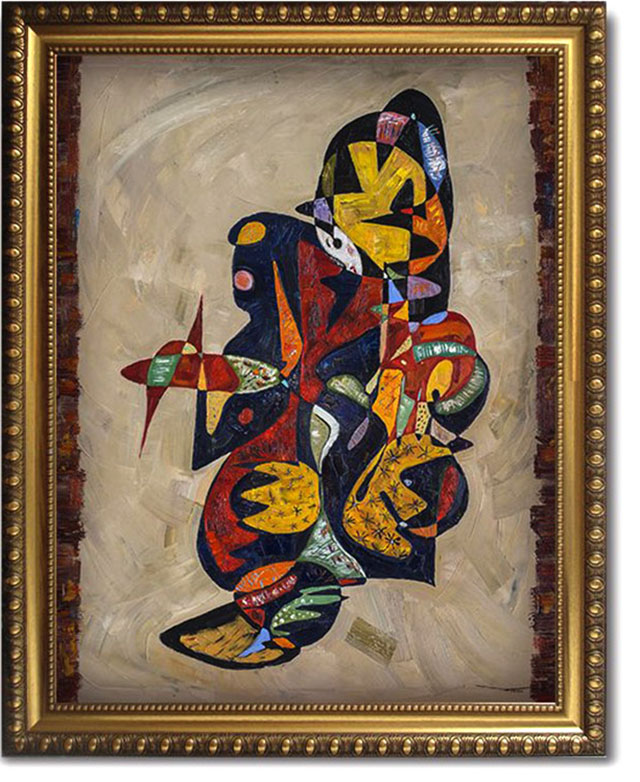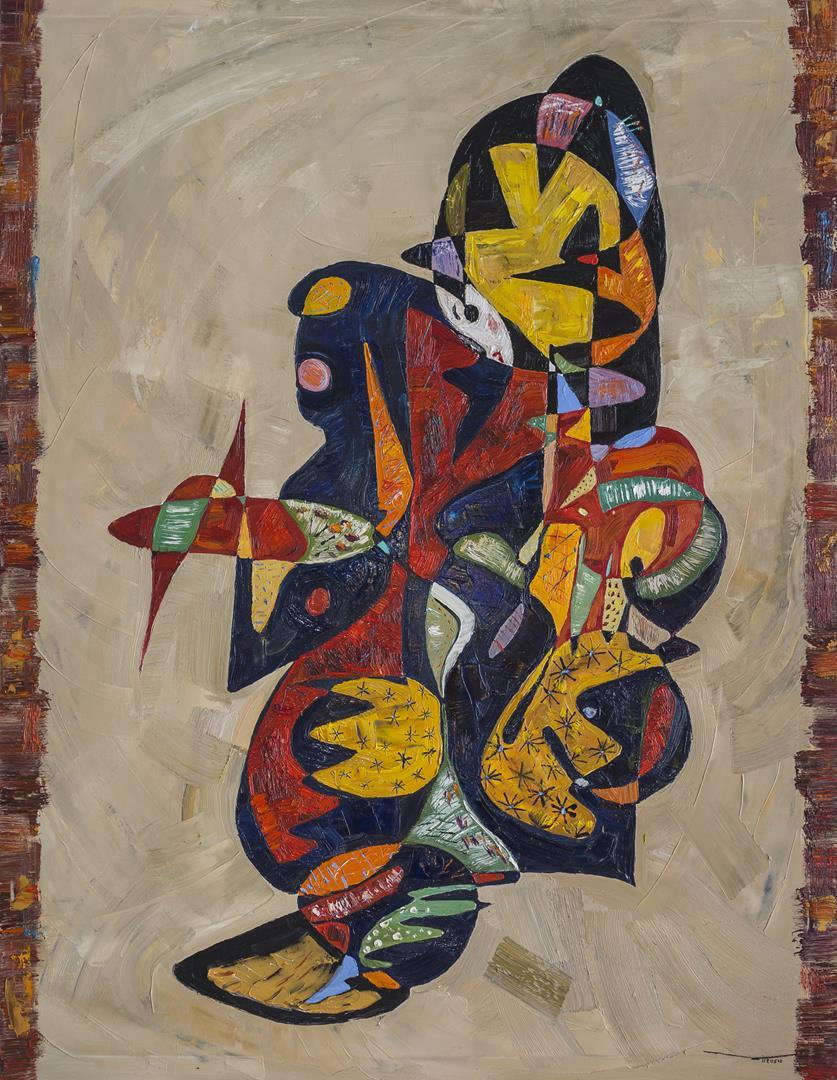- Abstract Geisha Painting in Modern Japanese Art
- Geisha Art - the Japanese Contemporary Art Heritage

- 7 July '18


by Alexandra Osadkova
7 July '18Abstract Geisha Painting in Modern Japanese Art
Japanese art has been one of the major sources in the evolution of Western modernist art. Since the mid-19th century, Europe went through a real obsession with its mysterious culture: netsukes, kimonos, and of course, prints were acquired by private collectors and artists themselves. Japanese aesthetic was one of the important factors in the development of Abstract art in general. So, the appearance of the oriental theme in the Geisha canvas of Gheorghe Virtosu is a logical manifestation of the artistic bridge that has emerged between two cultures in the contemporary world.
Modern Japanese ArtThe early 20th century wasn't only a period of continued assimilation of Western art forms and philosophies but also a period in which traditional Japanese forms sought and attained a new interpretive voice. With the growth of militarism, the visual arts were mostly conscripted for simple propagandistic purposes or enabled only in thematically banal forms. Japan's defeat in World War II made in several Japanese intellectuals and artists a distrust of the jurisdiction of this native tradition, causing them to search for significance in artistic movements and traditions overseas. Censorship of modern materials, especially for political material, continued to be levied. Generally speaking, however, the job opened the way for global cross-cultural experimentation and the development of an "international style" that persists into the present.
Geisha Art
The distinctive facial decoration and hairstyles, refined kimonos made of silks with exquisite colorful designs and the graceful demeanor of the Geisha have presented an entrancing subject for Japanese artists over the centuries. The tradition of the geisha is still deeply entrenched in Japanese culture. The selection process starts at a young age of around 15 and training is fairly rigorous over several years. Known as a Maiko in the beginning, the young women observe and train after being accepted into an Okiya ( Geisha house) – where they live and are taught the art of Geisha.
They are taught the subtleties of Japanese culture including tea ceremony, flower arrangement, calligraphy, poetry and performing Japanese traditional music and dance. When they turn 20 and are acknowledged to be skillful in art and service, they become Geiko, a full-fledged Geisha. As a hostess, they are expected to carry themselves with grace and poise and they only appear in public wearing their traditional makeup and elaborate kimonos. During their service as a geisha, they have to renounce most modern trappings, live together with other Geishas and mentor a Maiko.
The are also trained in the art of conversation and service for the entertainment of their male customers. Geisha most literal English translation would be a performing artist. The elegant, high-culture world that geisha are a part of is called “the flower and willow world” which is a metaphor for “beauty and strength”. Gentle movement, avoiding direct eye contact by looking downwards and walking slowly, were encouraged to support yin/feminine traits. Their adherence to subservience and mystery was regarded by the geisha to be a statement of passive yin femininity, which to them was a display of empowerment, as their centuries-old tradition believed that their well being, strength and balance depended on it.
Subject Geisha Painting
Color
The origin of their art is traced back to the classical Japanese theater Kabuki. Even now the members of okiya (geisha house) have connections with Kabuki and form a sort of fan-clubs of this or that actor. From them, they learn all performative, dressing and makeup skills. It is the stage, where the recognizable ‘white mask’ from the lead base was born. One can see the hint at that tradition in a suggestive white shape in the upper part of the figure. Red and black brushstrokes are meant to represent red lipstick and black accents on the edges of the eyes, which also were the essential part of geishas’ makeup.

Format
Unlike most of the artist’s paintings, this one has a horizontal format as an homage to the Japanese woodblock printing. At the same time, the work contains a conscious or unconscious reference to the European tradition: the vertical borders bring to mind two canvases by Vincent van Gogh, namely, Oiran, the painterly version of the print after Eisen, and Flowering Plum Orchard after Hiroshige. In both of them, the painter has added decorative borders that are absent in the original.
Portrayal
The capacity of the abstract language enables Gheorghe Virtosu to avoid the cultural appropriation: the oil painting isn’t a straightforward replica of the massively popular character in the context, which is completely detached from the original environment. The artist shows all respect to the Japanese heritage, creating an elaborated portrayal, which is as multilayered, as the dress of geisha.

